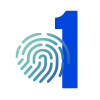IT system security is constantly evolving, with threats and protection measures progressing nonstop. This reality makes total security impossible, especially when combined with the human factor, which remains unpredictable despite training and educating users. So how does a business mitigate the risks?
Supported by the zero-trust model, ITI has developed a guide based on six fundamental pillars. Our approach enables companies to better defend themselves from attacks and protect their sensitive data. The main objective is to strike a balance between security and functionality, taking into account the importance of the IT assets you wish to protect and the financial means available to you.
 ➔ Identity management
➔ Identity management
Identity theft is still a major challenge for companies, which remain the favourite target of hackers. When a user attempts to access an IT resource, it is more important than ever to verify their identity through a robust authentication process that ensures the access complies with the principle of least privilege. In other words, you must ensure that users are only allowed to access the resources necessary to complete their tasks. Identity management is the basis of zero trust and includes the following elements:
- Access management
- Multifactor authentication (MFA)
- Single sign-on (SSO) and password policy
- Conditional access
Access management is your first line of defence to combat identity theft and guarantee compliant access to your company resources:
 ➔ Endpoint protection
➔ Endpoint protection
Once access is granted to a user, the next step is to secure data flow on the devices. To do so, it’s important to keep the workstations up to date and equip them with advanced safeguarding solutions. Possible weaknesses include viruses and malware, among others. Users with local administrator privileges must also be set up with:
- Endpoint protection from viruses and malware
- Limits to local administrator rights and non-essential functions
- Local disk encryption
- Centralized device management
- Device posture validation
- Workstation standardization by profile
Securing device data by following these guidelines will significantly reduce the risk of cyber attacks and loss of sensitive data. To learn more, visit our page on the topic.
 ➔ Application monitoring
➔ Application monitoring
Software security vulnerabilities are a choice battleground for hackers. Code injections and malware are frequent threats, since each new version of a software produces potentially exploitable new flaws. Whether deployed on site and/or in the cloud, apps and their APIs serve as interfaces for circulating and processing data. Advanced control measures must therefore be applied to detect unauthorized access and monitor the configurations and any anomalies:
- Information and event management
- App access protection
- Web protection and filtering (SWG and WAF)
Be sure to also conduct security tests and code audits. These are essential to identify and correct potential flaws rapidly before they’re exploited by hackers.
 ➔ Network defence
➔ Network defence
Errors in network design, configuration or maintenance are also vulnerabilities. Controls must be implemented to monitor the data flow and provide real-time protection that stops attacks from propagating. To prevent these types of threat, it’s important to go beyond traditional firewalls:
- Protection of local and wide area networks
- Network access and segmentation (NAC)
- Wi-Fi network security
- Remote worker protection
Implementing these advanced security controls to monitor and protect your networks will help to limit the spread of attacks.
 ➔ Infrastructure security
➔ Infrastructure security
Whether made up of local servers, virtual machines, containers, or microservices, infrastructure remains a prime target for hackers. It is critical to continually assess your infrastructure’s current version, check its configuration and accesses, and permanently monitor it to detect and neutralize any threats. Adopting the best security practices and implementing proactive management are essential to strengthen the infrastructure’s resilience against potential attacks:
- Server and container protection
- Security patch management
- Backups (airgap, immutable)
This is also where your recovery plan comes into play, ensuring the continuity of your operations and quick recovery of your systems in the event of an infrastructure breach or failure. It’s important to take every precaution to prepare for any possible outcome.
 ➔ Data governance
➔ Data governance
Protecting data means ensuring its protection, even when it circulates beyond the company’s secured perimeter. The goal is to guarantee the confidentiality and integrity of sensitive information, while keeping it available when users need to access it. Robust solutions should be set up, supported by rigorous access management policies and monitoring mechanisms to detect any anomalies or attempted violations:
- Data classification and protection
- Lifecycle management
- Archiving and encrypting
- Data governance
To find out more about our teams’ expertise in compliance and governance management, see our page:
Educating and training users about good security practices is an essential way to strengthen your data protection and reduce the risks related to human errors and targeted attacks.
Continuous monitoring
At every level, continuous monitoring remains the best safeguard for any organization. Time is your worst enemy. Quickly detecting and responding to any security incident and adopting a proactive approach to prevent breaches is of critical importance.
In fact, the primary role of a security operations centre (SOC) is to provide real-time monitoring and analysis of your networks, databases, applications, and other systems to ensure your information is protected. Additionally, performing regular security audits and vulnerability tests will allow you to determine areas of improvement and better protect your IT infrastructure.
Leave nothing to chance
When the time comes to assess your security posture and establish a solid road map based on these six fundamental pillars, don’t hesitate to consult specialists like those at ITI. With their extensive experience, they’ll help you to prioritize and implement your actions and determine which solutions are most suitable for your business reality. They’ll also help you strike the right balance between security and functionality, taking into account the importance of the IT assets you wish to protect and the financial means at your disposal.
Would you like to know more about assessing your IT security posture?
Our teams offer you this visual guide, adding security technologies to explore at each stage of your journey
Why ITI?

